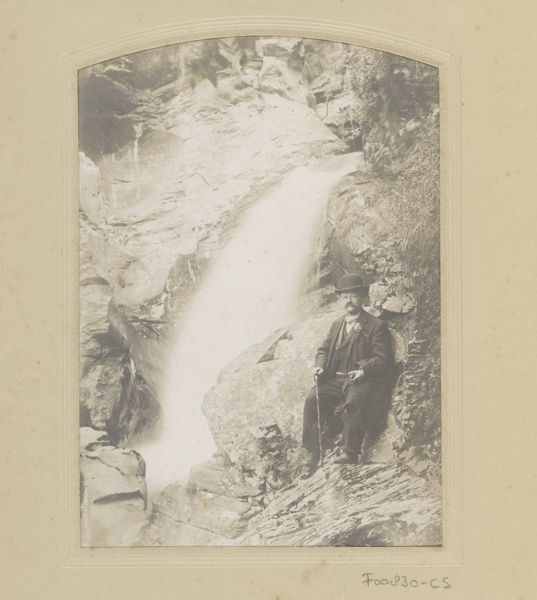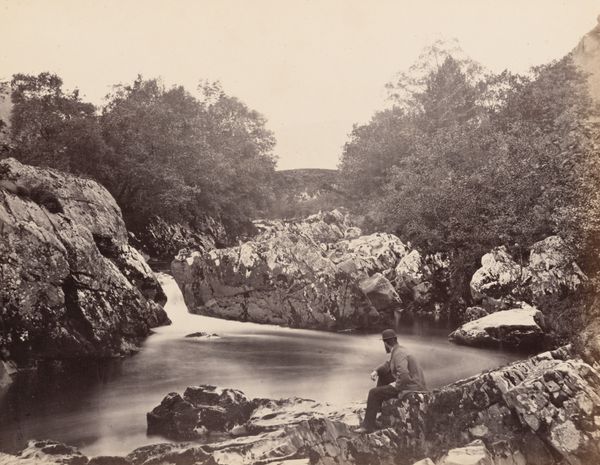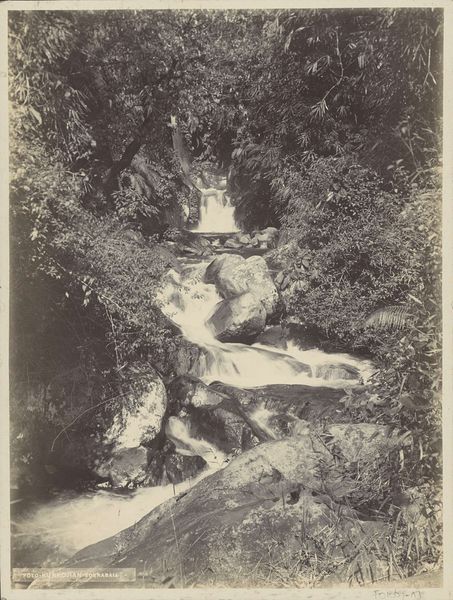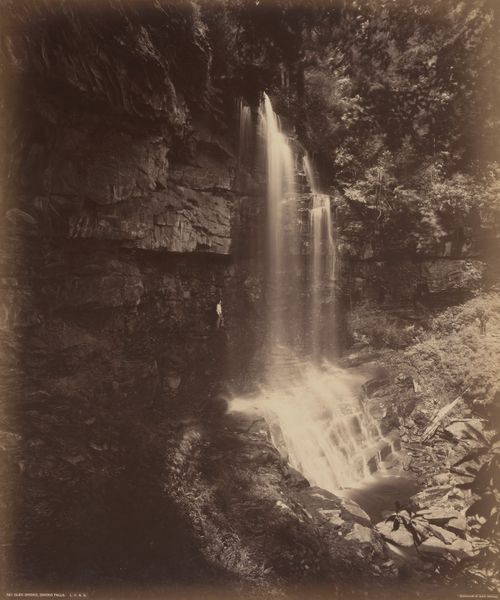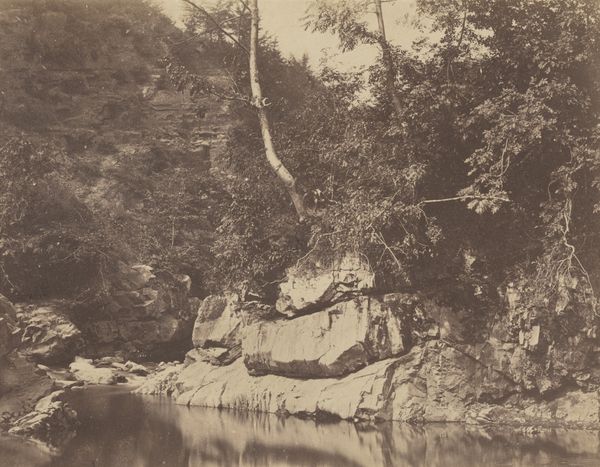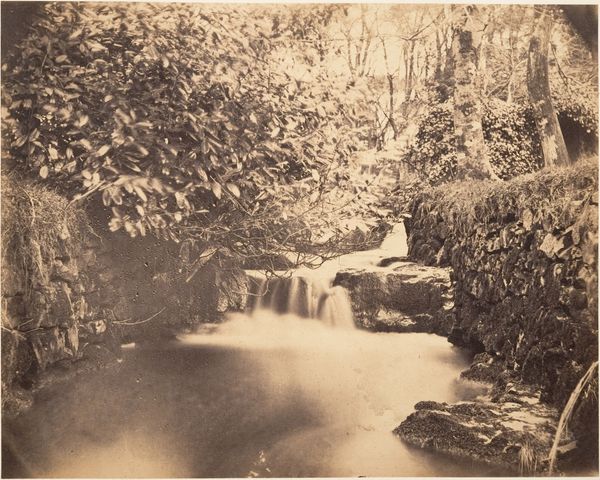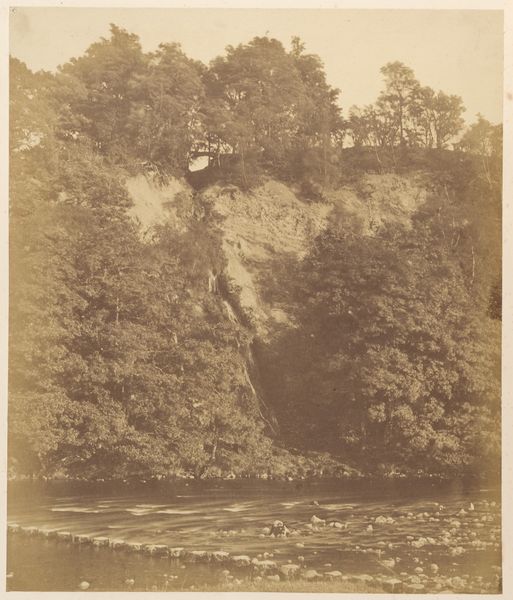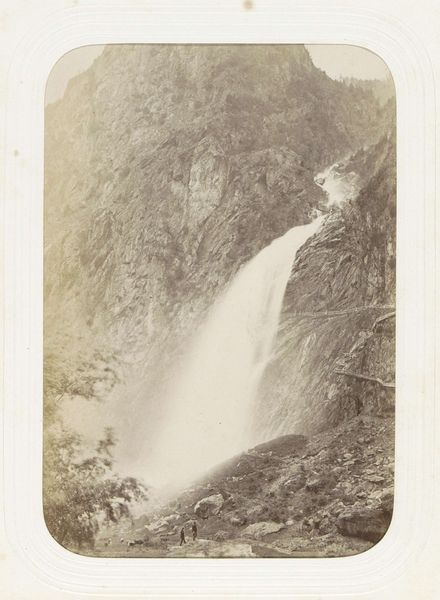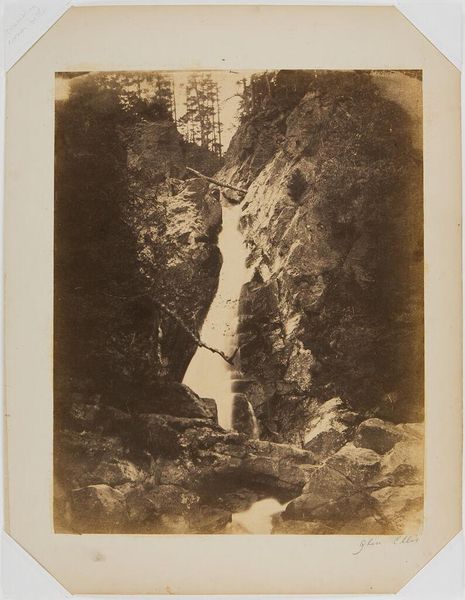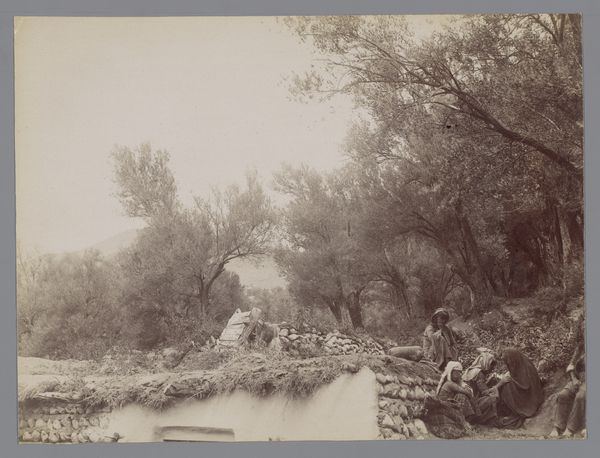
Dimensions: 8 3/4 x 6 15/16 in. (22.23 x 17.62 cm) (image)11 3/4 x 10 in. (29.85 x 25.4 cm) (mount)
Copyright: Public Domain
Curator: Welcome, everyone. We’re looking at Benjamin Franklin Upton’s albumen print, “Minnehaha Falls,” dating from around 1857 to 1870, here at the Minneapolis Institute of Art. Editor: My first impression is of muted serenity, of the contrast between the soft, blurry falls and the crisp definition of the trees that frame it. The composition pulls my eyes upward toward the cascade. Curator: Exactly. Upton's work captures not only the natural wonder but also a constructed image of idealized landscapes and Native American subjects popular during the romantic era. We see three Indigenous figures in the foreground contemplating the falls, an allegory of man’s harmonious existence within the American landscape, staged in the context of dispossession. Editor: And look at how the tonal range works to enhance this sense of serenity, this meditative quality. The sepia tones, from dark shadows at the base to bright highlights in the waterfall, give a gentle gradated appearance of depth. Curator: But that sense of peace obscures a complex political narrative. These photographs, while aesthetically pleasing, contributed to a romanticized, often inaccurate, and commodified understanding of Indigenous peoples that conveniently aligned with expansionist policies. The image was sold as a curio. Editor: Perhaps. Still, artistically speaking, there's something to be said about how the light filters through the dense foliage. Observe how Upton controls the light in terms of softening the waterfall against the backdrop, giving a unique aesthetic that speaks of beauty in simplicity. Curator: Agreed. It speaks of the photographer’s eye, the ability to shape perceptions and influence cultural narratives through his chosen subject. It brings to the forefront the way nature photography played a crucial role in promoting American identity and justifying western expansion. Editor: Indeed, examining the composition and light provides us a view to observe artistry from Upton. We’re both bringing out layers that are more profound than the image appears, wouldn’t you agree? Curator: Absolutely. Each of our angles provides a more insightful lens to fully see and perceive its context, its technique, and, more critically, its place in cultural history.
Comments
No comments
Be the first to comment and join the conversation on the ultimate creative platform.
